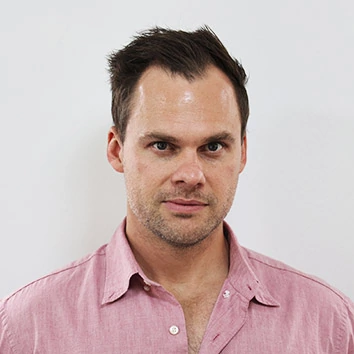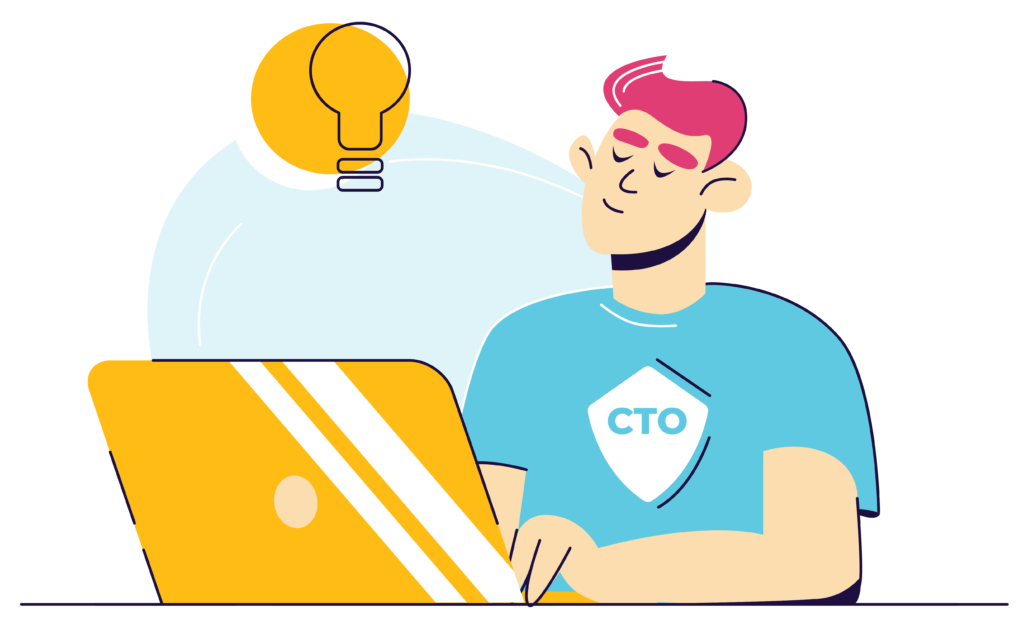If there’s one thing you need to know about us, it’s that SOC 2 is our absolute jam. It’s one of the OG frameworks here at Scytale, and it often feels like writing about a close childhood friend; we know them best and love talking about them.
We’ve done the latter quite extensively already, and we can tell you everything you need to know about SOC 2 compliance in two seconds flat. However, that’s the thing about compliance—there’s always another SOC 2 rabbit hole to explore.
This time, the SOC 2 report sections and their relevance to your service organization.
Let’s Recap the SOC 2 Framework
What is SOC 2 Compliance?
In a (tiny) nutshell, SOC 2 governs your service organization’s controls, focusing on SOC 2 areas such as, security, availability, processing integrity, confidentiality, and privacy. This means that it’s primarily an audit framework that establishes criteria for managing customer data based on these five trust service principles. SOC 2 doubles as an audit procedure and criteria, and a voluntary compliance standard specifying how an organization should manage internal controls and protect customer data.
What makes it unique, however, is that these compliance requirements are geared explicitly toward technology-based companies, especially those that store their customer data on the cloud.
It’s also important to consider the fact that the SOC 2 landscape is constantly changing and evolving. This means that even if you think you’ve deep dived into every corner of the SOC 2 compliance world, a new update pops up like an island waiting to be explored. Which is exactly what we’ve done in our piece on The Latest SOC 2 Revisions and What They Mean for Your Business.
SOC 2 Reports: What Are They, and Why Do They Matter?
Regarding compliance in general, reassurance is always welcomed—especially when implementing industry-specific controls. That’s where SOC 2 reports come in handy—ensuring service organizations have implemented the required controls to safeguard client data.
These reports provide concrete proof and evidence of compliance, which is a biggy, as SOC 2 is an attestation instead of a certification process like ISO 27001. Therefore, the key sections of a SOC 2 report ultimately showcase your controls’ presence (and effectiveness) to any user or stakeholder seeking to assess your security, availability, and processing integrity.
From a business perspective, there are five main things that a SOC 2 report does for your business, namely:
- Meets customer demands
- Gives competitive advantage
- Simplifies decision making
- Builds customer trust
- Enhances customer relationship
If you’re still on the fence about whether you really need an SOC 2 report, check out our post that answers your most burning questions about whether pursuing an SOC 2 report is really worth it.
The Two Types of SOC 2 Reports
Before going too deep into the nitty-gritty of SOC reports, it’s important to establish that there are two types of SOC 2 reports: SOC 2 Type 1 and SOC 2 Type 2.
A SOC 2 Type 1 will examine your controls at a single point, while a SOC 2 Type 2 will examine your controls over time, usually between three and twelve months. For this article, we will refer to a Type 2 report.
Still, penning every detail of your compliance in a way that reads well may seem daunting. To help structure the SOC report sections, we’ll focus on the key areas, each serving a distinct purpose. Let’s take a look.
Explore the Critical Sections of a SOC 2 Report
When undergoing a SOC 2 report, there are three key elements to keep in mind before exploring the specific sections.
- SOC 2 reporting is detailed:
You will have to have access to a large amount of organizational data that corresponds with almost every element of your company. SOC 2 reporting means analyzing and compiling said data in a way that translates granular technical detail in a way that is easy to digest for your clients.
- SOC 2 reporting is comprehensive and appropriate:
SOC 2 reporting follows an expert (and flexible) InfoSec framework which means as an organization you can rest assured that you cover all the relevant data security and privacy bases for your specific threat landscape.
- SOC 2 reporting is verified:
Your SOC 2 report is verified by an independent CPA audit firm. This means that your business can prove compliance via independent, objective evidence that you have complied with the rigorous SOC 2 criteria.
Although the SOC 2 report may differ within each organization, four key sections should still be included.
Section 1: The Auditor’s Opinion
Clients aren’t solely going to take your word for it, which is why one of the critical sections includes a summary of findings from a qualified auditor and their assessment. This consists of an overview of your verified security practices, tested against the Trust Service Criteria – also known as an opinion letter. Additionally, this section will focus on critical touchpoints, typically including:
- When the auditor started the project
- The scope of their review
- The period covered (Type I or Type II)
- An opinion on your security
The auditor’s opinion is undoubtedly one of the most critical sections. This opinion validates the reliability and effectiveness of the controls in place at the service organization. There are four types of opinions (Unqualified, Qualified, Disclaimer of Opinion, and Adverse Opinion). To ease the reviewing process, these opinions can be interpreted as follows:
- Unqualified Opinion: Your controls are designed properly and are operating effectively.
- Qualified Opinion: At least one or more of the controls were not designed properly or that they were not operating effectively.
- Disclaimer of Opinion – The auditor is unable to express an opinion, which is often due to insufficient information and evidence provided
- Adverse Opinion – Your systems are not reliable and do not provide an adequate degree of information security
Section 2: Management Assertion
This is a document your organization should prepare. It should be created before the audit, as the auditor will use it as a reference during the audit. Your management’s assertion should detail the design and operating effectiveness of the controls, along with a declaration that all relevant information has been disclosed to the auditors. Your management assertion should cover the scope, timeline, and other relevant considerations from the business’s perspective instead of the auditor’s. However, there are still some guidelines that should help create your assertion.
According to The American Institute of Certified Public Accountants (AICPA) there are three purposes for the management assertion:
- To determine whether the service organization’s system description is presented in accordance with the criteria.
- To test whether controls specified in the description were designed correctly.
- Evaluate whether the controls functioned properly during a Type II report evaluation period.
Section 3: System Description
The system description gives an overview of the service organization’s system, including the services you provide, the infrastructure used, and relevant technology. It should provide a detailed and accurate reflection of the system’s nature and scope. These criteria include security, availability, processing integrity, confidentiality, and privacy. The system description should explicitly detail how the service organization meets these criteria. Organizations typically focus on touch points such as:
- System components (including infrastructure and key personnel)
- System boundaries
- Trust Services Criteria not applicable to the system
- Incidents and system changes
- Complementary User Entity Controls (CUECs)
This description should also include any significant changes to the system during the reporting period that might affect the assessment of controls.
Section 4: Description of Criteria
This section is the meaty core of the SOC 2 report and often the most lengthy (and significant) section. Your auditor prepares this section and provides a detailed evaluation and report on their investigation into each one of your controls and their effectiveness. This is the nitty-gritty and often appears in the form of a spreadsheet, diving into each individual control, the technical review of each, how effective they are in protecting data, and how well those controls performed throughout the audit period.
The deviations noted in this section highlight instances where controls did not operate as intended or where there were gaps in their implementation or effectiveness.
These deviations can vary in severity and impact. Some may be minor discrepancies that pose minimal risk to data security, while others may be significant deficiencies that require immediate attention and remediation. Common types of deviations include non-compliance, weaknesses in controls, issues arising from the day-to-day operations of controls, and others.
Section 5: Additional Information From Management
Although this section isn’t mandatory, it is a great opportunity to add any additional information you feel may be relevant to the narrative. For example, management can utilize this area to provide additional context or reference elements not tested or covered in the report. Although considered an optional section of SOC 2 report, organizations use this space to communicate their future plans or expectations for new systems, or to express a detailed response from management to a qualified opinion report. Organizations might also include remediation plans or improvements undertaken post-audit period in this section to demonstrate ongoing commitment to compliance.
Ultimately, SOC 2 reports are a science. Fortunately, we’ve mastered them. However, navigating your SOC 2 report is one thing—actually getting compliant is a whole other story—one we know how to tell!
Easy-Breezy SOC 2 Compliance with Scytale
You don’t have to wrap your head around SOC 2 reports just yet. That’s why we’re here! At Scytale, we help service organizations get SOC 2 savvy without breaking a sweat. How? Well, we replace the nightmare of running after evidence and never-ending admin with effortless compliance automation, including:
- Customized SOC 2 Controls
- Automated Evidence Collection
- Custom Policy Builder
- Continuous Control Monitoring (CCM)
But we don’t just want to do it—we also want to train your team to ensure that when you become compliant, you have a strong first line of defense to help you stay compliant.
Ready for us to knock your SOCs off?











